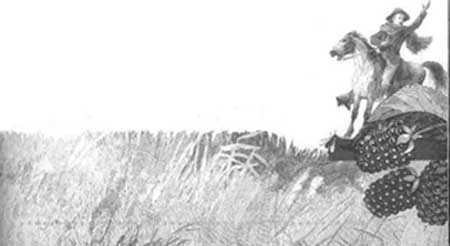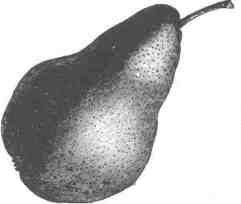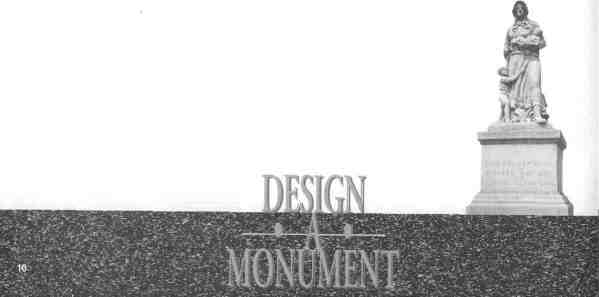 |
Home | Search | Browse | About IPO | Staff | Links |
 |
Home | Search | Browse | About IPO | Staff | Links |
|
Beth Stroble
Overview
Main Ideas
The central thematic question for the lesson is: How did the Ernst colony exemplify triumph and tragedy on the Illinois prairie? Students will consider both.
5
Connection with the Curriculum
Teaching Level
Materials for Each Student
A copy of the narrative portion of this article
Objectives for Each Student
Use primary source material to create an image of life on the Illinois prairie.
These activities capitalize on student's multiple intelligences to help them understand historical concepts, to make comparisons to contemporary events, and to take an active, personal role in processing the meaning of historical events. The three activities are sequenced to build students' engagement with and appreciation for Ferdinand Ernst's vision for life on the Illinois prairie.
Opening the Lesson
Activity 1 has students thinking creatively, using primary source material. Ask students to read Handout 1excerpts from Ferdinand Ernst's travel journal. Then students will create a "biopoem" about life on the Illinois prairie, using the Ernst source. Activity 2 has students working together to consider Ernst's persuasive strategies. Arrange students in groups of three. Each group should identify one person who is a recorder of the group's ideas. Another should serve as facilitator and timekeeper. Another reports to the class. Then ask the students to compare and contrast the persuasive strategies in Ernst's Journal with a contemporary situation. See Handout 3 for examples. Ask each group to share its analysis. For Activity 3, arrange students in groups of four. Each group should work together to reach consensus on the design and place for a monument to the Ernst Colony. All four members must form a part of the monument that is modeled for the class.
Developing the Lesson
Modeling will assist students' comfort levels in Activities 1 and 3. Your modeling need not duplicate the exact activities; you might, for example, write a biopoem about life in your town today and create a monument to your town's founders.
Concluding the Lesson
Discuss students' learning as a result of the activity. Encourage individual research on topics of interest.
Extending the Lesson
Write a letter to a person in the news or to the local newspaper editor, expressing the class's ideas concerning the situation discussed in Activity 2. Photograph the monuments, write a rationale for them, and mail both to the historical society of the class's choice.
Assessing the Lesson
6
Ernst's journal is entitled Observations Made upon a Journey Through the Interior of the United States of America in the Year 1819 (Hildesheim, 1820). The following excerpt was translated from the original German text by E. P. Baker of McKendree College and published in Transactions of the Illinois State Historical Society for the year 1903.
"Many of these so-called prairies are found in the State of Illinois, and one could probably assume that they amount to a half of the entire area. According to the nature of their fertility they are covered with tall or short grasses and shrubs and, indeed, no more inviting thing can be imagined for a stranger than to settle here and to live and move in this abundance of nature. He need to do nothing more than to put the plow once into these grassy plains, which are for the most part quite level, and his fields are splendid with the richest fruits and the most abundant harvests ... The rivers have here no strong current, which circumstance, along with many others, produces each year many fevers; but one finds that this evil decreases in the same degree in which the land is brought under more extensive cultivation. A number of these evils as flies, mosquitoes, etc., likewise disappear with increased cultivation. The flies become exceedingly troublesome to the traveler on horse in the great plains during the summer months of July, August, and September; yes, it is even asserted that these insects in very hot weather are able to kill a horse in a short time ... On the 11th of July, (1819) I, in company with ten travelers on horse, crossed the Wabash and entered the State of Illinois . . .
After a journey of 22 miles through these prairies we [re]ached the tavern; it was full of travelers. Nevertheless each one was served well enough, the horses were well cared for, and only with respect to the lodgings was the comfort not great. Each one had to prepare his own bed upon the floor as well as he could, and even here the American shows a peculiar ease which is the result of his noble freedom. Everything is done without ado and without ceremony. This manner of living, which was to me at first very strange and disagreeable, soon received my entire approval little by little one feels himself free among free, honest people. The character of the Americans, which at first was so little agreeable to me, is nevertheless, on the whole, good. This opinion may be due to the fact that my living with them has, little by little, changed my judgment, or that the people themselves here are better than in the eastern states. ...On the 5th of September I arrived at Vandalia. This place, in accordance with the Constitution, is to become the seat of government of the new State ... Charles Reavise [Reavis] and I were the first who began to build [at Vandalia]. How difficult it was at that time to penetrate the dense forest which embraces the entire circuit of the future city ... But how it will have changed in 10 or 20 years! All these huge forests will have then disappeared and a flourishing city with fine buildings will stand in their place. A free people will then from this place rule itself through its representatives and watch over their freedom and well-being."

7
Biopoems enable students to synthesize their learning by capturing the essence of a person or place in a few lines of poetry. Here is an adaption of the formula for a biopoem.
Line 1. Name what is being describedFor example, if we were describing life in a contemporary small town, we could start:
Line 1: Vandalia Now use the excerpts from Ernst's journal (Handout 1) to write your own biopoem about life on the Illinois prairie in 1819.
Line 1. Criteria:
Follows biopoem directions 8
Arrange students in groups of three. Each group should identify one person to act as recorder of the group's ideas. Another should serve as facilitator and timekeeper. Another reports to the class. Ask the students to compare and contrast the persuasive strategies in Ernst's journal with a contemporary figure's appeals to audiences facing triumph and tragedy. Provide news magazine and newspaper accounts of current events. Each group will share its analysis using the data retrieval chart below. Emphasize the need to provide specific examples of each strategy. Each group will share its analysis. For example, if the students analyzed the Million Man March of October 1995 they could consider Louis Farrakhan's message of self-improvement and renewal for African-American men, contrasted with his separatist philosophy. Or, for example, the students could compare a contemporary Democratic or Republican politician speaking on ways to improve society through increased government programs or through budget- and program-cutting.
Data retrieval chart
Criteria:
Students participate within their groups according to their particular group roles

9
In 1928 the Daughters of the American Revolution erected in downtown Vandalia the "Madonna of the Trail" monument to pioneer mothers of covered wagon days. It is one of twelve similar monuments marking the route of the National Old Trails Road through twelve states from Maryland to California. The monument in Vandalia signifies the town's location as a gateway to the West as the western terminus of the Cumberland Road. There is no comparable monument commemorating the earlier Vandalia residents of the Ernst colony. In groups of four, design a monument to express the triumph and tragedy of the Ernst settlement. Your monument must use all four members of your group. You can use simple props in addition to your bodies. Create a plaque that names the monument and describes briefly its historical meaning. Then model the monument and show the plaque to the class. Assessment Criteria:
Monument uses all four members of the group and simple props

Click Here to return to the Article 10 |
|
|